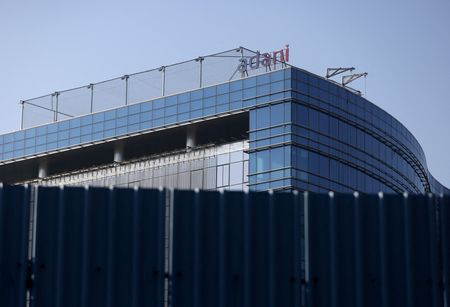By Georgina McCartney
HOUSTON (Reuters) -Oil prices settled lower on Tuesday as investors braced for a supply surplus due to potential OPEC+ plans for a larger output hike next month and the resumption of oil exports from Iraq’s Kurdistan region via Turkey.
Brent crude futures for November delivery, expiring on Tuesday, settled down 95 cents, or 1.4%, at $67.02 a barrel. The more active December contract settled at $66.03.
U.S. West Texas Intermediate crude settled at $62.37 a barrel, down $1.08, or 1.7%.
On Monday, Brent and WTI both settled more than 3% lower, their sharpest daily declines since August 1.
At its meeting next Sunday, OPEC+ may speed up production increases in November from the 137,000 barrels per day hike it made for October, as its leader Saudi Arabia pushes to regain market share, three sources familiar with the talks said.
Eight members of OPEC+ could agree to raise production in November by 274,000-411,000 bpd, or two or three times higher than the October increase, two of the three sources said. OPEC+ pumps about half of the world’s oil.
The increase could be as big as 500,000 bpd, one of the three sources said. Earlier on Tuesday, Bloomberg News reported that OPEC+ was considering accelerating its increases by 500,000 bpd.
OPEC in a post on X said it rejected media reports for plans to raise output by 500,000 bpd, calling them inaccurate and misleading.
“This (OPEC+) strategy could significantly squeeze margins for high-cost U.S. shale producers, potentially forcing them to scale back the record-level output they’ve maintained,” said StoneX analyst Alex Hodes.
Meanwhile, crude oil flowed on Saturday through a pipeline from the semi-autonomous Kurdistan region in northern Iraq to Turkey for the first time in two-and-a-half years, after an interim deal broke a deadlock, Iraq’s oil ministry said.
“Oil prices are under pressure in anticipation of OPEC+ deciding to restore additional quantities of oil back to market, along with the resumption of Kurdish exports, so additional supplies are weighing on market prices,” said Andrew Lipow, president of Lipow Oil Associates.
The market has remained cautious in recent weeks, balancing supply risks, which mainly arise from Ukraine’s drone attacks on Russian refineries, with expectations of oversupply and weak demand.
Elsewhere, U.S. President Donald Trump won Israeli Prime Minister Netanyahu’s support for a U.S.-backed Gaza peace proposal, but the stance of Hamas was uncertain.
In an ideal scenario, shipping traffic through the Suez Canal would return to normal following a Gaza peace deal, which would remove a significant portion of the geopolitical risk premium, PVM analyst Tamas Varga said.
Adding to the bearish sentiment, the potential risk of a U.S. government shutdown has raised demand concerns, said ANZ analysts in a note.
U.S. crude production rose to a fresh monthly high of 13.64 million bpd in July, up 109,000 bpd from the previous record in June, data from the Energy Information Administration showed on Tuesday.
The market awaits weekly oil stock data from the American Petroleum Institute, later on Tuesday. Analysts polled by Reuters forecast a build in crude and gasoline stocks and a drawdown in distillates.
(Reporting by Georgina McCartney in Houston, Enes Tunagur in London, Anjana Anil in Bengaluru and Emily Chow in Singapore; Editing by Marguerita Choy, David Gregorio and Edmund Klamann)









